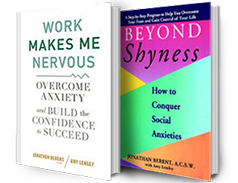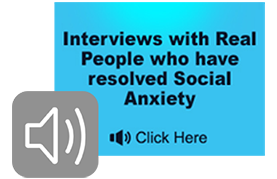At age 56, I have been exercising for most of my life; primarily a healthy obsession with aerobic activity. I recently hired a trainer. I told him that my objective was to be able to play basketball a couple of times a week without back and knee pain. Three months later, after a regimen of cross training including Pilates and weight training, it appears that I have met my objective. Believe me; my workouts, where I invested in using different muscles with the trainer were hard and they paid off!
Using the metaphor that the brain is a muscle, consider a similar dynamic to help your dependent (or yourself) with selective mutism. The diagnosis for SM is very simple. If you know that your child-dependent does speak, but does not to specific people, or in specific venues, SM is present. SM is social phobia. It can be considered a “compulsion to avoid speaking” or a speaking phobia. The mutism is the tip of the iceberg. (It was not the tip of the iceberg that sank The Titanic; it was the ice underneath the water). The underlying dynamics of SM include a complex integration of attitude, cognition, behavior, emotion, and physiology. It is important to identify other diagnostic issues including possible “processing” and/or medical challenges.
As parents you have a tremendous opportunity to help your child the earlier that you are aware of the problem. If you are an adult with SA or SM reading this you probably have the initiative needed to employ “cross training”. The average age of my patients since 1978 has been 27. This fact has been the direct result of a common belief that the “shy” or socially anxious child will simply grow out of the problem. You can read plenty of stories of adults with SA in my book “Beyond Shyness”. Avoidance and dependence can be the basis for specific personality disorders.
Back to my training for a moment; I received as a gift of a really neat athletic watch which I often use during my workouts. Recently when the time changed to “day light savings”, for the life of me, I did not want to spend 15 minutes going though the manual to figure out how to make the change. I could have, but I did not want to experience the discomfort of concentrating. When my step-son visited he did it in 10 seconds. This help was not “enabling” as I do have my life in order.
It is imperative for effective cross training that you understand the concept of “enabling”. It means any behavior by care-givers that inhibits the growth or potential of the child-dependent (of any age).
“Cross training” means learning how not to enable the problem. It means doing things differently; using different muscles to build potential and develop skills. A well known SM expert told the family of a 6 year old, “tell her she does not have to talk”. This “paradoxical” strategy was effective in reducing the stress temporarily. The problem was at age 8 the child was still investing in the concept of “you don’t have to talk” and the parents had no idea of what to do.. The “expert” left out the non-enabling part of the therapeutic strategy. Long term productivity was not achieved. The family came to me two years after seeing the “expert”.
“Enabling” promotes primitive brain functioning even though many SM children (and adults) are very intelligent. It creates an illusion-delusion for the dependent; meaning that child is learning the world will adjust to them instead of they have to learn how to adjust to the world. Non-enabling which is “cross training” will empower the potential of your dependent. “Cross training” must be done methodically! It creates stress for both caregivers and child. It is imperative to learn how to channel this stress into positive energy.
For readers who believe that your child only has the problem in school because he or she is “normal” at home, consider that SM is a form of “performance anxiety” manifested primarily in pressure or challenge venues such as school. “Cross training” is needed by school personnel also. This can only be implemented productively after parents learn their strategy. If not, fragmentation and distress will result. If teachers are not taught therapeutic strategies at the beginning of school it is very easy to lose the year to “enabling” in the academic environment.




